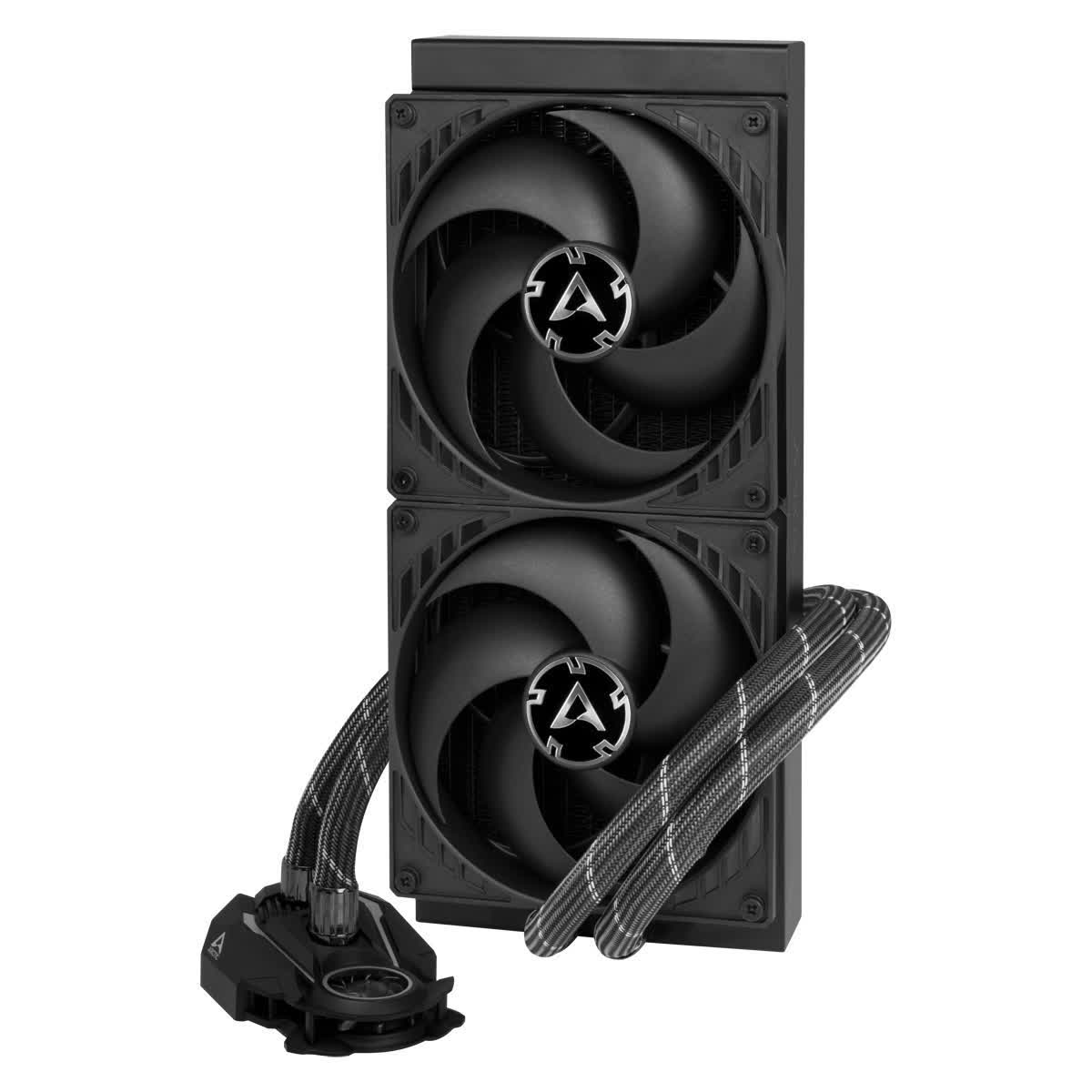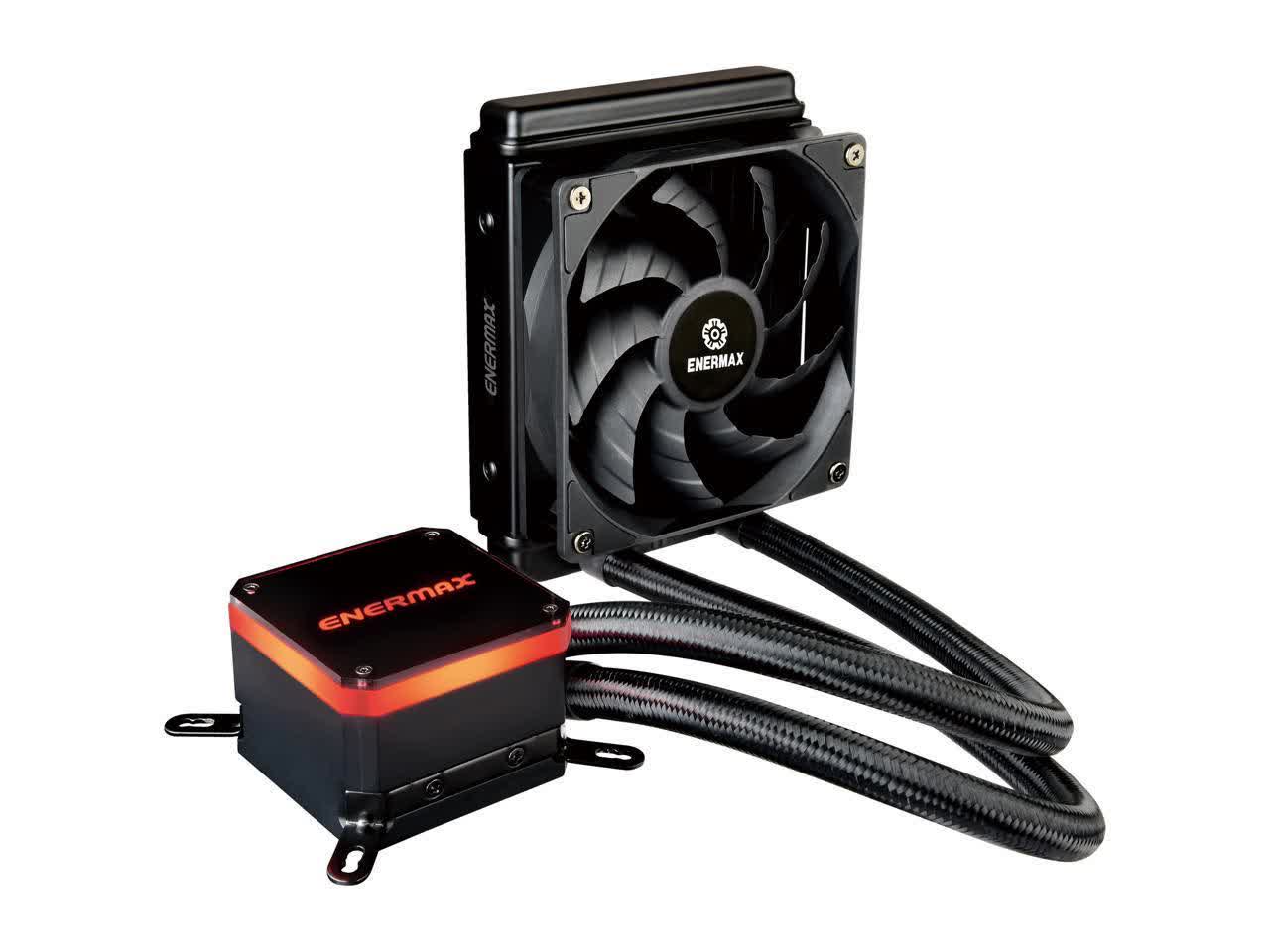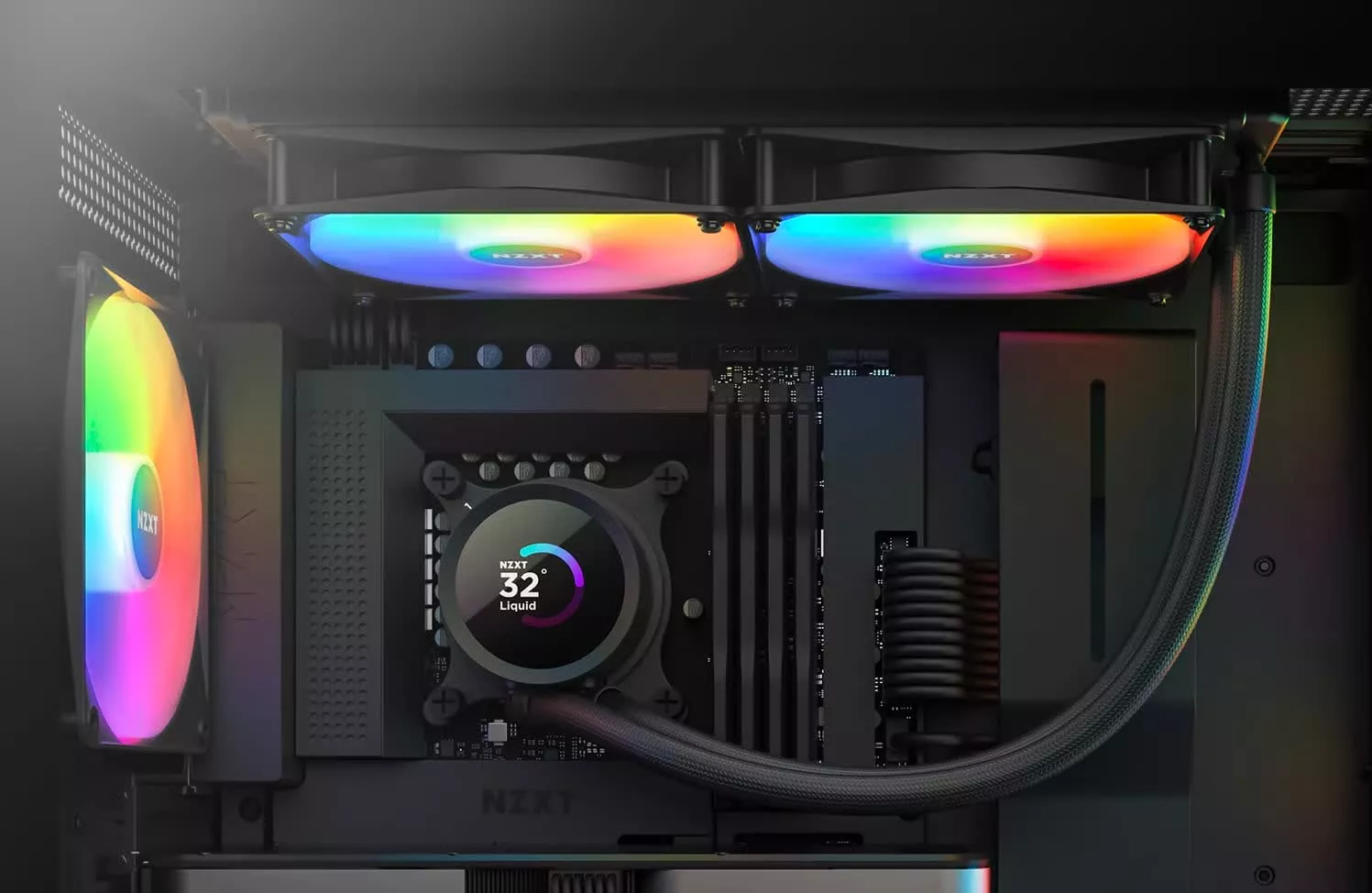How should you keep your CPU cool? Should you go for more traditional air coolers using a heatsink or go with an all-in-one liquid cooler with a pump and a radiator? Radiators take longer to heat up than heatsinks, thanks to the additional mass of the water flowing through them, but are also harder to cool once they get hot. For quick work or gaming sessions with long breaks in-between, water coolers are better, but for prolonged workloads air coolers offer a better value.
The more powerful your CPU is, the bigger and better cooler you'll need, no surprises there. If your desktop PC needs a lot of power and you travel with it, you're likely to feel safer with a radiator that's attached to your case via 8 or 12 screws than with a huge chunk of metal hanging off your motherboard.
Another reason to use water cooling is if you have a slim case that doesn't have the space for a larger air cooler. On the other hand, a pump is much harder to replace than a fan if it broke, and while rare, the possibility of leaks within an electronic device can be scary. Regardless of which cooler you choose or need, this guide will cover many great options at every size and price point.
- Best Air Coolers
- Best Low-Profile Cooler
- Best All-In-One Liquid Cooler
- Best Compact AIO Cooler
- Budget Coolers
- Socket TR4
Best Air Coolers
Thermalright Phantom Spirit 120 + Many Alternatives

The Thermalright Phantom Spirit 120 (and the almost identical SE version) are the improved successors to the Peerless Assassin series that shook the market last year. In all but the most demanding scenarios, they will perform just as well as the best CPU coolers on the market, while remaining just as quiet, for less than half the price.
Starting at just $38, the cooler uses seven copper heat pipes, two 120mm fans spinning at up to 1500 RPM, and a split-tower design to make sure that less air is lost along the way. Thermalright is a seasoned company that was somewhat forgotten, but with such price differences between the Phantom Spirit and its competitors, concerns about warranty for the fans are arguably moot.
In most systems, the only reason not to give Thermalright a shot is if you have extremely tall RAM modules (more than 60mm). In that case, you should spend a bit more on the similarly performing Scythe Fuma 3 ($50), which offers complete RAM clearance thanks to its asymmetrical shape.
The heavyweight champions
If you want the very best cooling performance, you should get the Thermalright Frost Commander 140, starting at just $44. It only uses five heat pipes, but they are 8mm thick rather than the standard 6mm. It has a 140mm fan in the middle and a 120 one on the outside for improved RAM clearance. Both fans can reach 1,800 RPM, so you may want to limit their speed.

If you want to show off your RAM modules without compromising performance, the solution will be expensive: the DeepCool Assassin IV costs $100, but features a unique design and a physical button for low-noise mode.
More compact alternatives
If you aren't running any of the most power-hungry CPUs, you can also go with a more compact and lightweight cooler. In this case you have several good options, including the Be Quiet! Pure Rock 2 Black ($45), Arctic Freezer 34 eSports Duo ($43) and Noctua NH-U12S Redux ($55).

Budget coolers that are much better than stock
AMD's Wraith Spire is surprisingly good for a stock cooler, nearly matching Cooler Master's venerable Hyper 212 Evo, now selling at $40. On the other hand, Intel's stock coolers and AMD's Wraith Stealth are meant to be replaced by those who want to get the most out of their CPU.
If you want to improve upon what your stock CPU cooler offers for as little money as possible, here are two proven choices: ID-Cooling's SE-214-XT offers four heat pipes and a 120mm ARGB fan for $18. If you don't want RGB, the Thermalright Assassin X120 starts at the same $18 without it.
Threadripper Cooling
You may think that AMD's Threadripper CPUs are harder to cool than most mainstream CPUs, because of their extra cores, but in fact their larger surface area makes up for those as long as the cooler is designed to utilize it. That's why Noctua is able to get away with a single 140mm fan and a compact design in its $100 NH-U14S TR4-SP3, possibly the most acoustically efficient cooler for AMD Threadrippers.
If you still prefer a split-tower design, the Be Quiet! Dark Rock Pro 4 TR4 looks similar to the Frost Commander 140 (but features slower fans), and currently costs less than its competitor ($90).
Best Low-Profile Cooler
Thermalright AXP120-X67

The market is filled with low-profile CPU coolers, because they are cheap to produce and fit into every case. The problem is, most of them aren't much better than stock coolers, if at all.
If you want top gaming performance in a small package, your best bet is the Thermalright AXP120-X67. At only 67mm of height, it has six heat pipes and a slim 120mm fan. It also offers complete RAM clearance and a many color schemes, starting at $27 for the white ARGB version.
If you need an even shorter cooler and your CPU is efficient enough, you still have several good options. At the time of writing, the shortest cooler with a 120mm fan is the ID-Cooling IS-55, starting at $37 and squeezing five heat pipes into a 57mm-tall body. The shortest cooler with four heat pipes is the Thermalright AXP90-X36, starting at $24, being just 36mm tall with a 92mm-wide fan.
Best All-In-One Liquid Cooler
Arctic Liquid Freezer II 280

Radiators marketed as "360mm" may sound better than "280mm," but this naming scheme only takes into account the combined length of the fans, and ignores their width. Spinning at the same speed, two 140mm fans will cool almost as well as three 120mm ones, while making less noise, being easier to maintain, and fitting into cases with 5.25" bays.
At $102, we can't ignore the Arctic Liquid Freezer II 280. Its two 140mm fans are capable of spinning at speeds between 200 and 1,700 RPM. The pump itself is kept cool by a 40mm fan, which helps cooling the motherboard's VRM as well. An ARGB version, with fans that can reach 1,900 RPM, is available for $115. With six years of warranty, this is a great value.
Alternatives at different price points
If you have a mainstream CPU or a relatively small case, but still want a liquid cooler, ID-Cooling currently sells its Frostflow X 240 for $55, and the LED-equipped Snow version for the same price. The two 120mm fans can reach 1,800 RPM, but start at 700 RPM. If you have the space for it, the 280mm version is now available for $60. At these prices, two years of warranty are good enough.
If you want something a bit flashier, look no further than the new NZXT Kraken 280, starting at $140. The LCD display on the pump is more than a gimmick, as it can make it easier for you to know if the pump fails. If money isn't a problem, the Elite version, starting at $220, features a bigger, sharper and brighter display with a higher refresh rate. A six-year warranty makes those coolers seem like a safer purchase.
Best Compact All-In-One Cooler
Enermax Liqmax III 120

If you have a Mini-ITX case such as the Cooler Master Elite 130, where space and airflow around the CPU are severely limited, a 120mm radiator may be your only sensible choice. Such a radiator isn't going to cool as well as ones that are twice or thrice its size, but it can still be a worthy improvement upon a stock cooler.
Out of the single-fan radiators on the market, the Enermax Liqmax III 120 seems to offer the best value by far at $60.
With a dual-chamber pump, it makes sure that the hot water that's pushed toward the radiator doesn't get mixed with the cooler water pulled out of it.
Unlike most of the radiators its size, the fan has a variable RPM of between 500 and 2,000. A 5-year warranty period makes it a perfect choice. The new "advanced" RGB version is available in black or white for $10 more.


